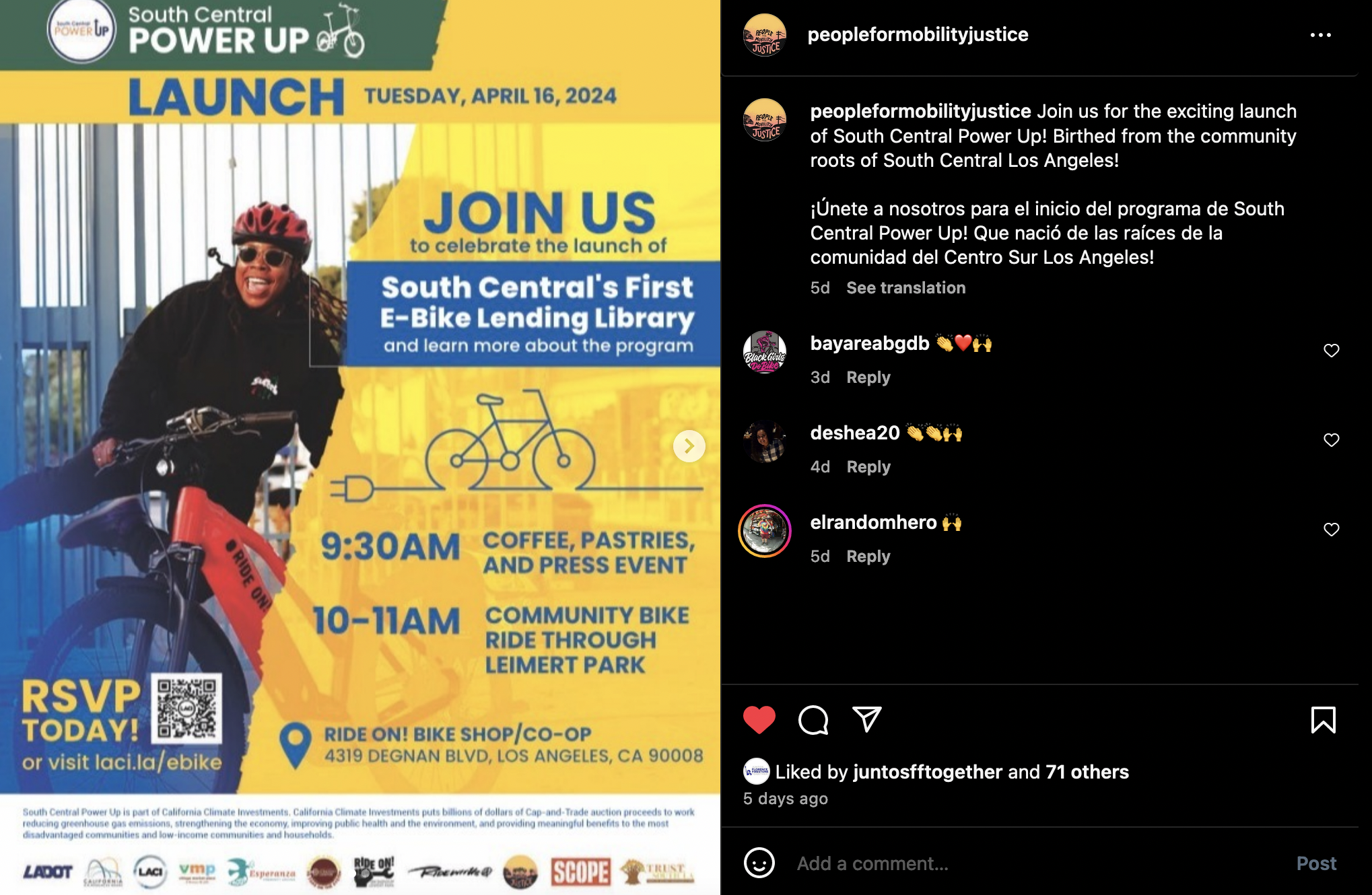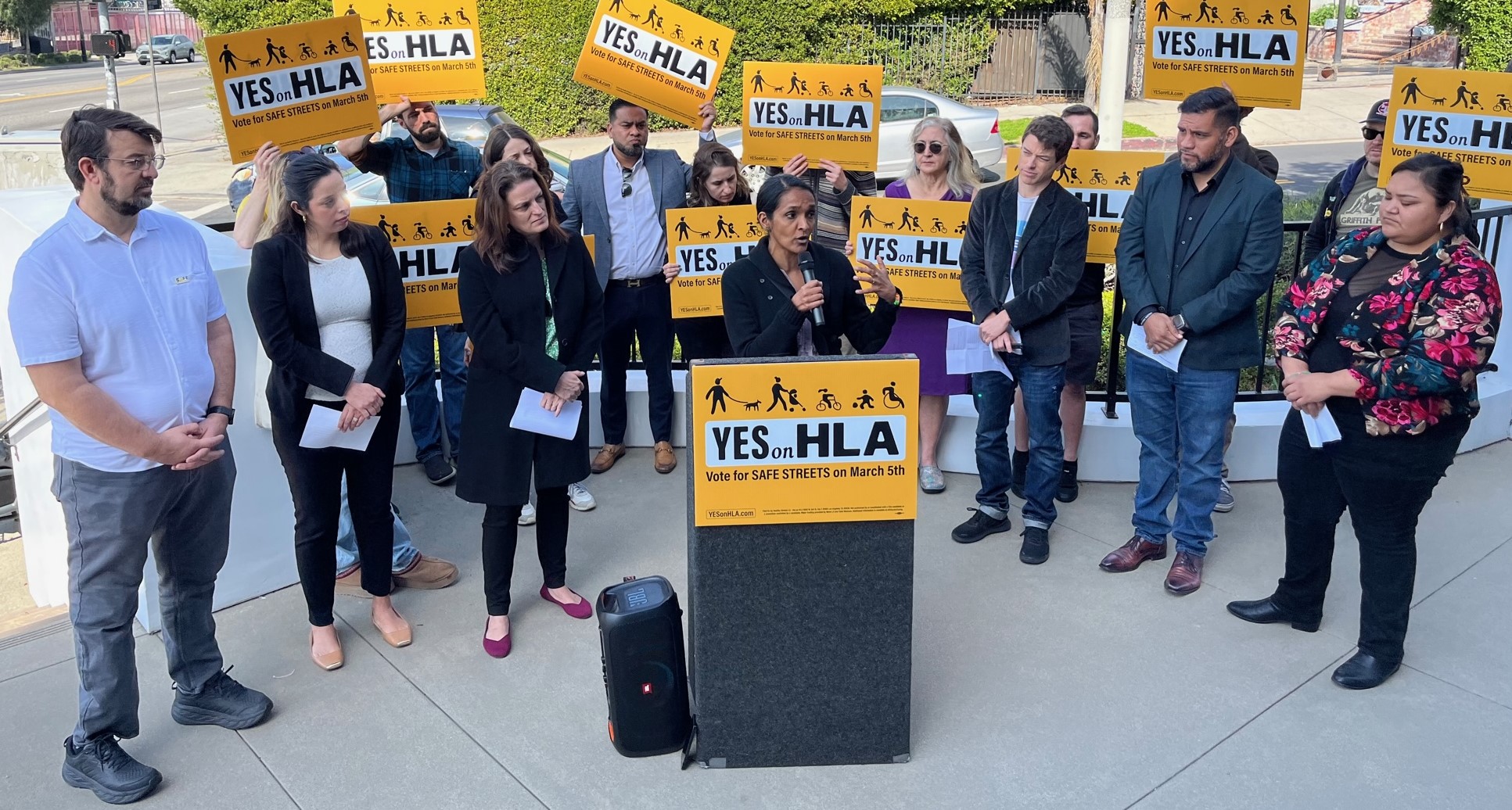Rethinking Streets in Northeast Los Angeles; An new Comprehensive Approach to Transportation Planning
8:45 AM PST on December 2, 2011
Nowhere else in LA area are individual street routes as important than in the Northeast. Because of the area’s hills there is no grid. Streets wind their way up hills and cut through valleys creating public space and connecting the community to places beyond.
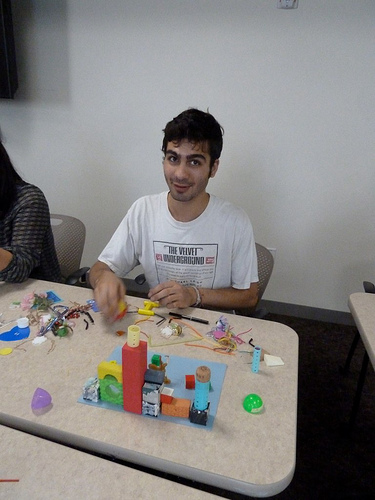
Sixteen Occidental College students are rethinking designs for York Boulevard in Highland Park and Colorado Boulevard in Eagle Rock as part of Urban and Environmental Policy Institute transportation class.
I facilitated a workshop to have the students to approach transportation planning from a non-traditional approach. Rather than ask the students the typical question. “How would you improve transportation on Colorado and York Boulevards?” I asked a different question.
Usually, the first question would have created answers such as wider sidewalks, bike lanes, bus service, more parking or faster traffic speeds. These are all great but they fail to understand how people want to use the street as public space.
Instead we took a comprehensive approach to the street design. I asked the students how would they envision these streets in 50 years? From this point we can plan backwards and find create the right mobility and land use patterns for the streets.
By having the students investigate how they envision the role of streets in their lives in 50 years we received creative, innovated, in-depth comprehensive answers.
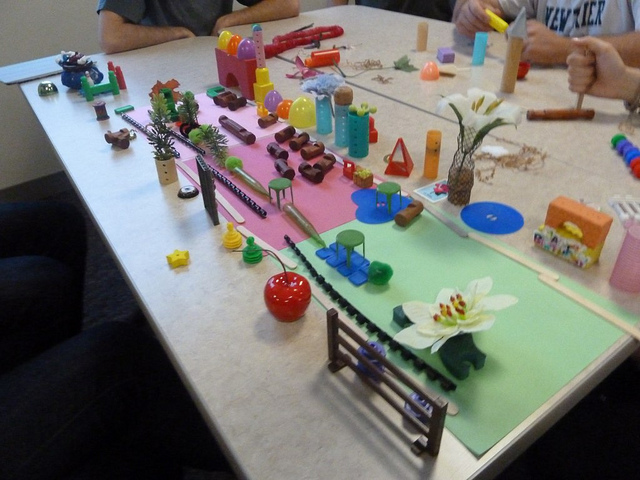
The students sat at four tables with a sheet of colored construction paper. On a separate table was a pile of thousands of non-representational, materials. These materials were buttons, plastic parts of toys, Popsicle sticks, pipe cleaners, small fabric flowers and much more
The students were instructed to use the construction paper and materials to build a diorama of their ideal street in 50 years. I told the students that they were no wrong or right answers. The students had twenty minutes to finish this first task.
The students walked over to the table of objects and started searching for the apppropiate materials or in some cases by inspired by the materials. These colorful, tactile, objects triggered the student’s emotional connections to the environment. By seeing, seeking, and touching the objects the student’s emotions increased. This process mimicked how they experienced the city.
Once the participants secured their materials they began building. During this time I asked the students if they needed help and walked around the room. Some of the students wanted to create the right answer from the material covered in the class but the instructor and my self insisted we want their personal preferences on street use.
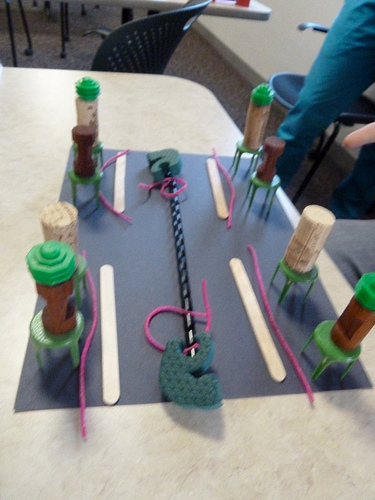
After the twenty minutes they were gave a one-minute presentation to the group on their ideal street. They stated their name and explained their model. One minute was good time limit because it allowed for every one to participate and kept the pace of the exercise. The shy students were less intimidated as well.
The students used the models to present their ideas by pointing to objects on the construction paper. The materials used are random to force creative thinking and create an equal/non-judgmental playing field where participants of all backgrounds can create non-traditional spaces and learn from one another.
The connections between objects and what they represented were fascinating to hear as they maneuvered through their models.
Since the students interjected their own personal experiences, memories, and random thoughts of places real and imagined, this became the most interesting part of the process. It was powerful to watch the students explain with so much enthusiasm and conviction about their ideal street.
The student ideas varied. Each participant created his or her streets in his or her own terms. Some designs were ideal based. Some designs are specific, and literal.
Here is the list of the students' concepts for their ideal street:
- Mixed Use/Complete Street
- Small Regional Plan
- Public Space
- TOD/Public Space/Complete Street
- Parking Management/Mixed Use
- Food on Streets
- Better Corridor Design
- Times Square/Streets for Entertainment
- Better Neighborhood Street
- Multi-use Neighborhood
- Better Land Use Planning
- Social Streets/Ped Friendly
- Michigan Ave
- Human Scale/Street Cars
- Eco-lodge/Nature in the City
Before the models were dismantled which sadden the students, they were documented in photographs. This also led to next exercise where the students were placed in groups of to envision York, Colorado, and Occidental transportation. They students were tasked to bring together their best ideas to these places this was going to be done by each group discuss their ideas. They were given a twenty minutes to complete this activity.
When the time was nearly over everyone gathered around the three tables to hear design solutions for York, Colorado, and Occidental College. Each group introduced the team members and walked us through their solutions. Each location had a different set of physical challenges that each group had to deal with. After each presentation the floor was opened up for questions from other students.
Many of their ideas from the groups seemed to focus on land use patterns and social activies on the streets. They created green zones, mixed-use, and ped/bike friendly streets. They also seemed to create streets that were destinations where you could patronize local businesses, take advantage of a community garden or places to hang out with friends to sit, rest, or linger. Moving quickly through the streets was not a goal of the students, which would be for a transportation planner. The student’s ideas expressed a longing for a sense of community.
When some says they want a “nice street” that can mean many different things. This kind of exercise helps participants use specific adjectives and references which allows the facilitator(s) to understand the needs, desires and habits of individuals who live in a community. In this case, the Occidental College Students envisioned different streets than the Boulevards that currently cross Northeast Los Angeles. Their ides aren't that different than advocacy efforts underway for North Figueroa Street by a group of community activists and businesses. Residents and students are ready for change, is Los Angeles?
Stay in touch
Sign up for our free newsletter
More from Streetsblog Los Angeles
Metro Looks to Approve Torrance C Line Extension Alignment
Selecting the relatively low-cost hybrid alternative should help the oft-delayed South Bay C Line extension move a step closer to reality
This Week In Livable Streets
CicLAvia returns to Venice Boulevard, Metro board committees, L.A. City Council Transportation Committee, Metro budget theater, and more



